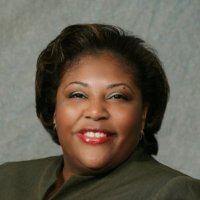By Tisa Jackson
Vice President of Diversity and Inclusion, Union Bank, N.A
Most organizations know that, for the first time in history, we have four generations in the U.S. workforce, which means you might see everyone from 20-something Millennials to Generation Xers, Baby Boomers and seasoned Veterans working side-by-side.
This can be a great advantage that puts companies in a stronger position to succeed in today’s multi-generational marketplace. But generation gaps may also be a hindrance, interfering with cooperation in the workplace and creating disconnects between workers and customers.
It’s our job as diversity professionals to help companies create an environment in which all generations can work as a team, despite differences. At the same time, we must prepare employees to be attuned to generational differences they are likely to encounter in serving customers.
It’s important to look at generational diversity from a broad perspective. For example, your company should have:
- Recruitment strategies that reach out to different age groups so you can increase generational diversity in your workplace, supporting increased productivity due to the expanded knowledge and skill set of your workforce.
- Training programs that promote better understanding and teamwork among employees of different generations—and prepare employees to meet the expectations of customers of all ages.
- Marketing strategies that respond to the needs of customers at different stages of life.
A Clash of Cultures
When generational differences are not addressed, the result may lead to problems that impact productivity and profitability. I saw this occur when I was working at a financial services firm a few years back, and human Resources leadership asked me to help resolve a crisis. The company had been receiving complaints about poor customer service and had terminated a number of customer service representatives. Something had to be done quickly to prevent further attrition among employees—and customers.
The company, which did most of its sales by phone, had assembled a young customer service team. Although these Millennials had strong sales skills, they hadn’t received any training to help them understand the nuances of serving the large number of Baby Boomers and Veterans in their clientele.
Feeling the pressure to meet their sales targets, some employees had become so frustrated by the number of questions they were receiving from customers that they had reacted in the worst possible way: by hanging up on them. Often, they would refer customers to the company’s web site for more information, following protocol, rather than invest the time needed to provide answers that would give customers peace of mind.
The customer service representatives didn’t understand that these customers were accustomed to having personal relationships with their bankers, and wary of doing business with someone they didn’t know. Nor did they realize that many of them were not comfortable with the internet or online banking.
Finding Solutions
We addressed this crisis in several ways. Our immediate priority was to provide training to help employees understand and appreciate differences between generations so they would be better equipped to meet the expectations of the mature market. The company also implemented changes in recruiting practices to increase the age diversity of the customer service staff, and the service delivery model was reexamined to ensure that mature customers would receive more personal attention.
As is often the case, this company didn’t take action until a problem arose. Diversity professionals should take the lead in helping companies become more proactive so generational clashes can be prevented. But we should go beyond trying to prevent conflict and develop initiatives that enable companies to capture the benefits of having the diverse skill sets, experience and perspectives different generations bring to the workplace.

Tisa Jackson
Tisa Jackson, Vice President of Diversity and Inclusion for Union Bank, N.A., has more than 13 years of experience in this field, as well as strategic human resources management, community development and organizational development. She is founder of the Professional & Technical Diversity Network (PTDN) of Greater Los Angeles, a diversity consortium comprised of companies committed to diversity and inclusion. Union Bank, N.A., is a full-service commercial bank providing an array of financial services to individuals, small businesses, middle-market companies, and major corporations. The bank has 337 banking offices in California, Oregon, Washington and Texas and two international offices. Union Bank is a proud member of the Mitsubishi UFJ Financial Group (MUFG, NYSE:MTU), one of the world’s largest financial organizations. Visit www.unionbank.com for more information.







Being proactive is key to building a synergistic diverse organization.
What are some of the recruitment strategies that you would recommend for finding skilled employees at different ages?
Thanks for the great article!